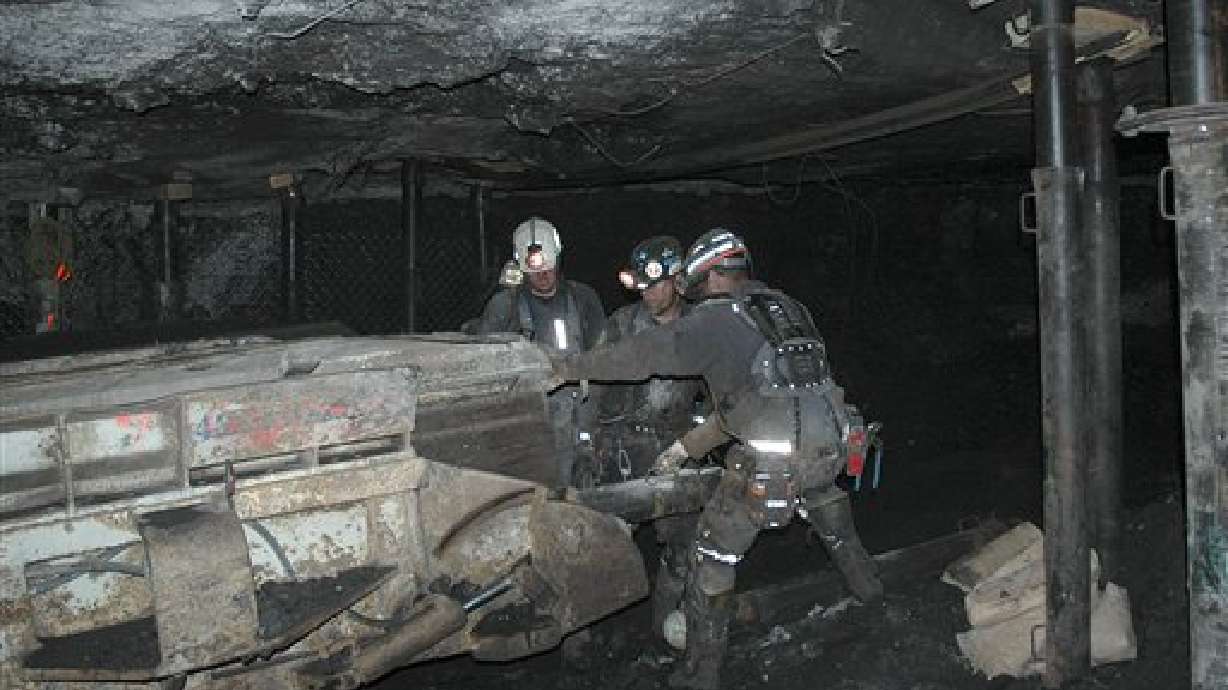Estimated read time: 3-4 minutes
This archived news story is available only for your personal, non-commercial use. Information in the story may be outdated or superseded by additional information. Reading or replaying the story in its archived form does not constitute a republication of the story.
John Daley Reporting Utah has vast coal resources, but its reserves, the amount immediately available, will run out within the next few decades, according to geologists and mining experts.
Much of the coal that's easiest to get to has already been mined. That means in the future companies will need to dig deeper or move elsewhere. The Crandall Canyon tragedy highlights this reality.
One longtime miner predicts just as the September 11 terrorist attacks changed our worldview, so will Crandall represent a realization that the easy coal in that region is now gone.
"They've been mining coal here for years. It's honeycombed. We've taken the cream off the top, now we're mining the hard-to-get coal. I don't know how they're going to fix that to where we can get in there and mine safely," veteran coal miner Wade Norton explained.
Miners, industry leaders and geologists all agree Utah has plenty of coal. The question is, at what cost? "All of our fossil fuels are finite in supply so it depends on how much we're willing to pay to get these resources out of the ground," David Tabet of the Utah Geological Survey said.
This is a growing issue for Utah. Upwards of 95 percent of the state's electric power is generated by coal.
The price of coal in recent years is up roughly 25 percent compared with five years ago. When prices are higher that leads to mining in places that were, perhaps, passed over when prices were lower.
Utah has 22 coal fields. Three of the mines; The Wasatch Plateau, Book Cliffs and Emery mines are active, but have been heavily mined. There are also several mines of marginal quantity and quality. And a few are promising, but may face other hurdles regarding things like ownership, quality and distance to existing power plants.
"Most of the easily recovered reserves in Utah have been mined," said Kim McCarter professor at the University of Utah Department of Mining Engineering.
"I don't think extracting this coal is impossible, but this is where we need the research into the engineering that will make it possible," Ellen Smith, Managing Editor of "Mine Health and Safety News," said.
Consumption is Utah is up sharply, doubling since the mid-80s.
How much is left is up for debate. But with the appetite for energy soaring easily obtainable coal could run out within a generation or two. "We probably have 40 to 50 years left at current economic conditions," Tabet said.
"We are definitely running out of reserves. Some have estimated maybe something on the order of 15 years of reserves left that can be mined. In order to get more coal, [we're] gonna have to go deeper and more adverse geologic conditions," McCarter added.
The Crandall Canyon mine collapse may represent a watershed: the end an era for easy coal.
The average Utahn uses about 20 pounds of coal a day. This coal supplies upwards of 95 percent of our electricity.
Coal prices in Utah are in the range of $20 to $25 a ton. A lot of what happens with coal in the future will depend on those prices and the prices of alternative fuels.









